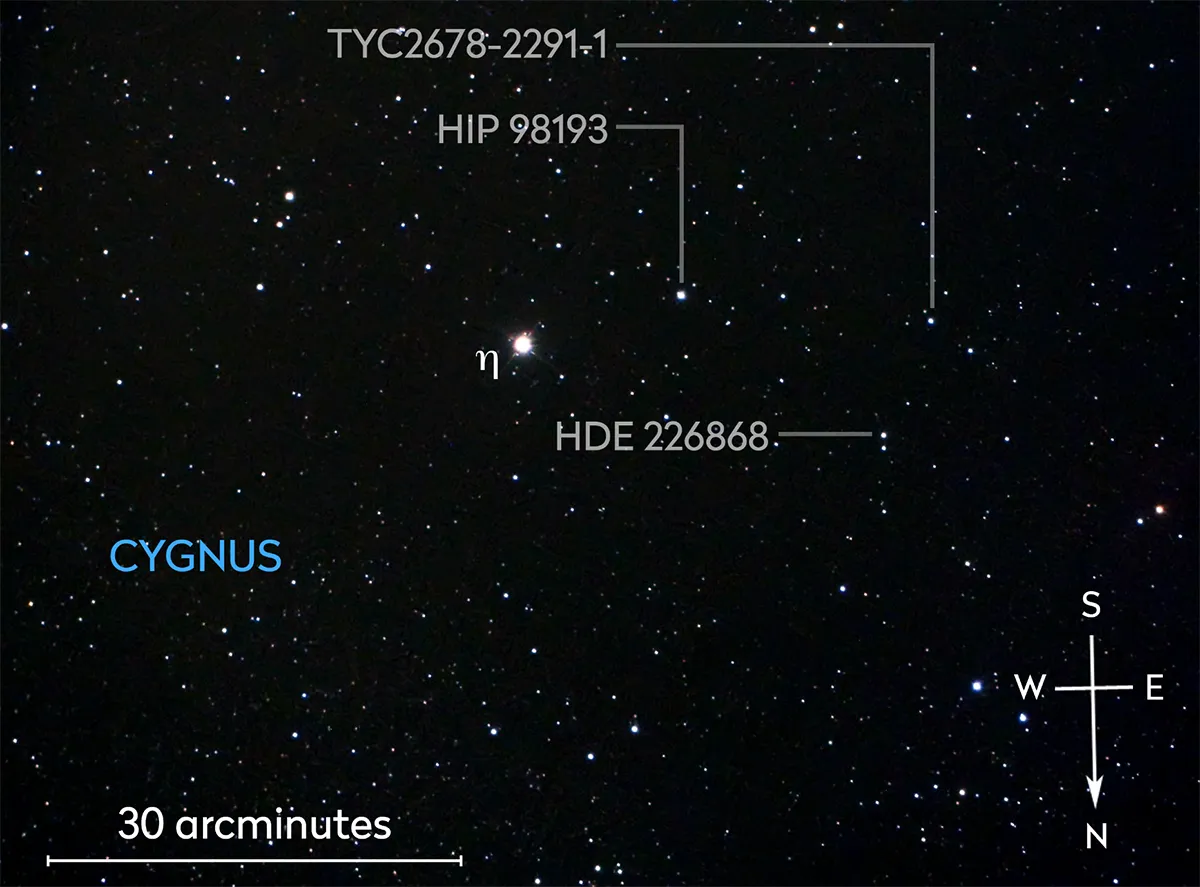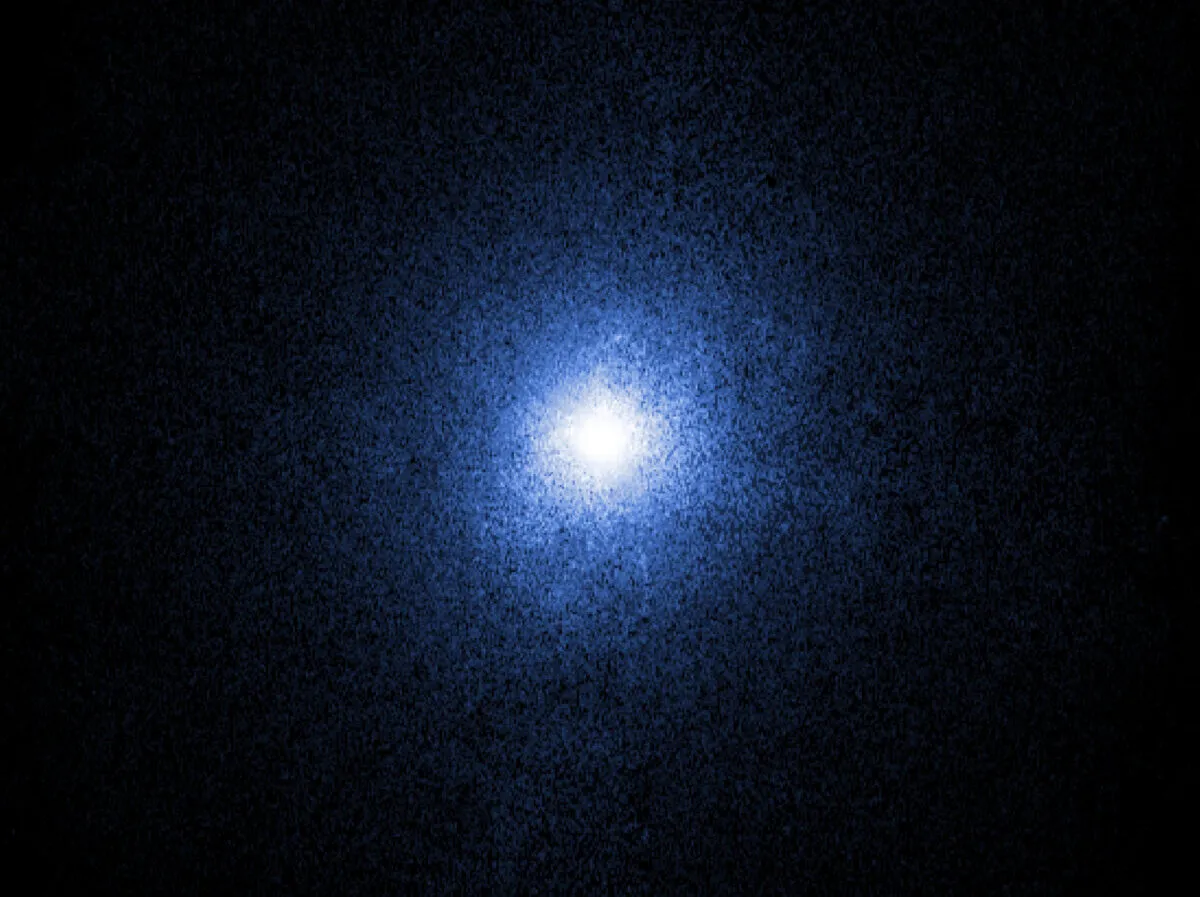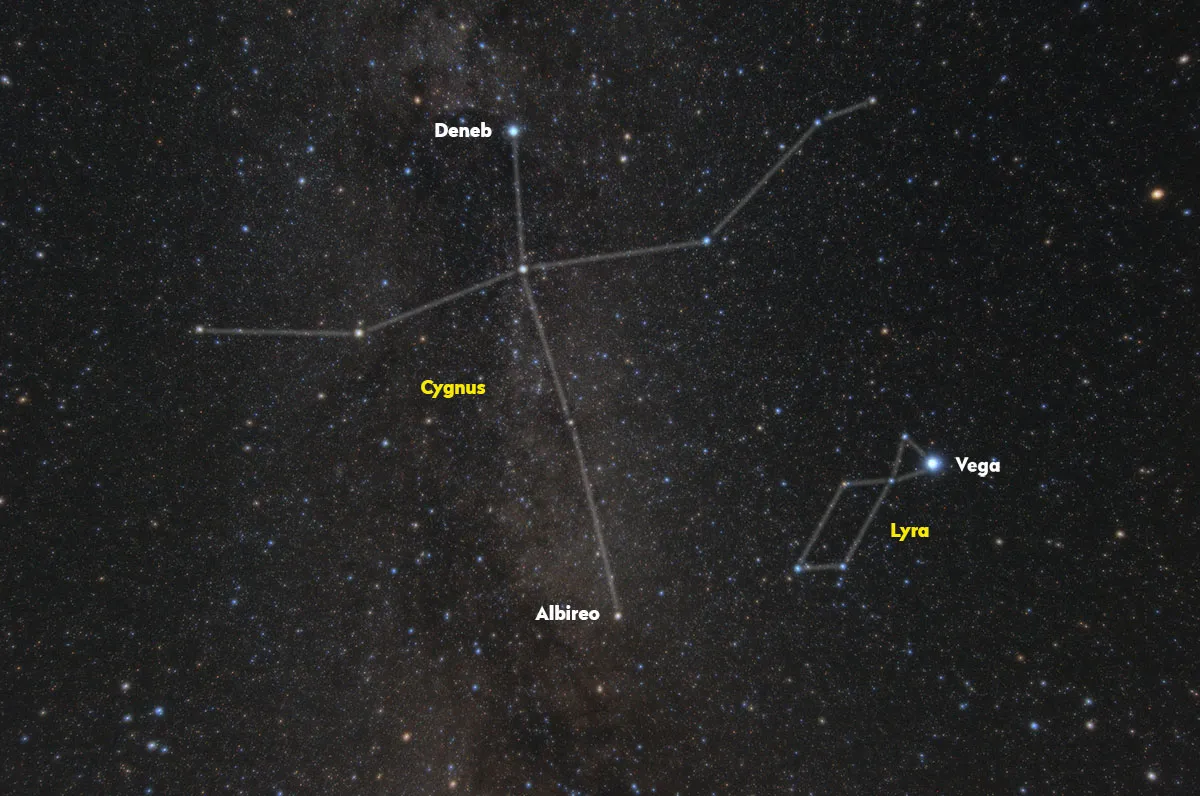Cygnus X-1 is a source of X-rays in our Galaxy and the first such source to be attributed to the presence of a black hole.
The Cygnus X-1 system was identified as a black hole by Paul Murdin and Louise Webster in 1971.
A black hole is an object so massive that its escape velocity has exceeded the speed of light.
As a consequence, no light can escape the object, leading to many strange space and time related phenomena.

Cygnus X-1 explained
From an observational standpoint, Cygnus X-1 is essentially invisible to the naked eye.
This isn’t the end of the challenge though, for Cygnus X-1 is one component in a high mass X-ray binary system.
The other component is a supergiant variable star HDE 226868 (HIP 98298), which shines at mag. +9.0 and can be seen through a small telescope.
The objects orbit one another, separated by just 0.2 AU.
HDE 226868’s stellar wind removes material from the star, which ends up spiralling around the black hole.
The resulting accretion disk around the black hole is energetic and hot.
This is the source of X-rays that gave away the existence of the HDE 226868’s companion black hole.

Locating Cygnus X-1
If you want to locate black hole Cygnus X-1, the real challenge is to locate HDE 226868.
The black hole can’t be seen and this object’s existence and nature will need to be provided by your imagination.
The black hole is believed to have a mass equivalent to 21.2 solar masses contained within an effective radius of 44km.
Locating a ninth magnitude star isn’t in itself a complex task. However, it’s located in Cygnus, against the background of the Milky Way and this will make it trickier.
The key is to locate the mag. +3.9, naked-eye star Eta (η) Cygni, which is located in the neck of the Swan between Sadr (Gamma (γ) Cygni) and Albireo (Beta (β) Cygni).

Look at the mid-point between these two easy naked-eye stars and offset slightly towards Sadr to identify Eta.
HDE 226868 is located 25 arcminutes east and 6 arcminutes north of Eta Cygni. To star hop to the target, centre up on Eta Cygni.
Look 11 arcminutes to the east to find mag. +7.3 HIP 98193. Now head 18 arcminutes east of HIP 98193 to get to mag. +8.9 TYC2678-2291-1, a star of similar brightness to HDE 226868.
Drift 8 arcminutes to the north of TYC2678-2291-1 and a fraction west to locate HDE 226868 with a mag. +10 star an arcminute to its north.
It may not look that special, but by observing HDE 226858 you’re also looking at a black hole!
Have you managed to locate Cygnus X-1 by observing HDE 226858? Let us know by emailing us at contactus@skyatnightmagazine.com.
This guide originally appeared in the October 2021 issue of BBC Sky at Night Magazine.
